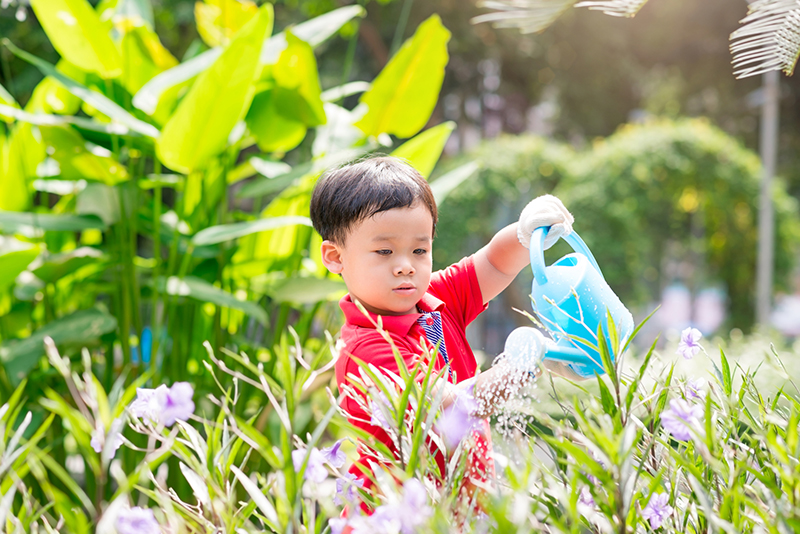Families For Life | The Circle of Life

Introducing your pre-schooler to the joys of science doesn't mean you have to buy specialised equipment or toys. There are plenty of activities that only require materials easily sourced from the neighbourhood market. You might even have what you need at home!
For example, spare cardboard boxes can serve as rocket ships for a day spent exploring the universe. Or you can turn an old wire clothes hanger and a bucket of soapy water into a fun lesson on blowing bubbles.
A perennial favourite among children, however, is simply growing things. And you don't need a garden to introduce your child to the pleasures of mucking about in the dirt. All you need is a sunny corner (where you'd hang your laundry, for example) and some common household materials. You don't even need soil unless you start getting serious about gardening.
What's more, growing something simple -- such as a small bean plant -- opens up a new window of opportunity to talk about many areas of science and math. Your child can learn analytical skills such as measuring, charting data and comparing/ contrasting. Or you can discuss the many aspects of the natural world -- the life cycle of a plant, the water cycle, nutrition, growth and more!
To get started, read on!
Grow your own beans
Materials:
- a clean glass jar
- cotton balls
- seed (Mung Bean, Red Bean, Butter Bean…any that is easy to grow indoors)
Optional materials:
- notebook
- camera
- ruler
- pencil
Steps:
- Pack cotton balls into the glass jar.
- Plant two or more beans in the space between cotton balls and the inside of the jar.
- Water cotton balls until damp not soaked.
- Place this set up in a sunny place in the house.
- Wait and observe for growth developments.
Diary of a bean
This is what to expect of your project:
- small roots start sprouting from the beans
- little hairs (tendrils) form from these tiny roots
- the tendrils become a network of roots
- a stem starts to show
- first leaves appear
Learning activities
Create a growth diary for your child and use it to record information of the various stages. This is a great way to introduce the concept of documentation and using a diary.
Teach your child how a ruler is used to take height and width measurements.
Photograph growth progress for contrast and comparison exercises. Pictures speak volumes and your child can easily tell one development stage from another without the need for words.
Explain to your child the ingredients for plant growth - natural elements of air, water and light. At the same time, talk about the needs of the other living things on the planet.
Explain to your child the life cycle of a plant, touching on stages like flowering and fruiting. Compare the early development of the bean plant from seed to seedling to the development of a baby into a toddler. Use pictures for this if you have them.
Above all when informing your child, do not make it one-way learning. Actively encourage your child to ask when curious. Your child may not learn the way you plan, so be aware of this and adapt when needed.
Further activities
Since your child enjoys growing beans, add to the enjoyment by doing the following:
- Transplant the bean seedlings to a pot let them grow further. Who knows? You may just get a few more beans of your own from this. Use good, well-drained potting soil and water and fertilize frequently. Possible discussion topics include nutrition and hydration.
- Grow and transplant different beans and compare rates of growth.
- Grow the same type of bean under different conditions. Put one in the fridge, one in an air-conditioned room, and one in room with no light.
Explore more
- Falling in love with nature
- Measuring with a growth chart (3-6 years)
- Noticing nature on a walk (3-6 years)
Contributed by:
Early Childhood Development Agency